If you’re like us here at MNA, chances are your December and early January have been peppered with conversations about raises, cost of living adjustments, and performance appraisals. These conversations are part of our annual ritual of closing the book on one fiscal year and launching into the next.
While much of our conversations regarding compensation were business as usual, one piece was new for December 2023 – presenting staff with MNA’s draft compensation equity policy. This policy defines MNA’s salary bands by position using benchmarks from market data, details the parameters and process for raises, promotions and adjustments to salary bands, and clarifies the process for any ancillary compensation, such as bonuses. It allows each team member to see where they are (and why) within the structure and to see the steps needed and opportunities available to move within that structure.
MNA set out to create a compensation policy that meets the three pillars of equity, defined by the experts at Edgility:
- Clarity and Transparency: Staff understands the salary bands and the factors that lead to placement within each band.
- Fairness and Consistency: Decisions are made using the same criteria each time, with consistent results.
- Inclusion and Belonging: Staff trust the process and feel valued for their contributions.
The Importance of Salary Transparency
In short, we know that without a clear policy and process to ensure equitable compensation, salary decisions are made unsystematically, which allows inequity to exist and persist. Montana is ranked 23rd in the US when it comes to gender pay gaps – collectively, women in Montana make 81 cents for every dollar earned by men. Similar gaps exist based on differences in race and ethnicity.
We also value our team and would like them to stick around (aka employee retention). The top three reasons people quit their jobs, according to Pew Research in 2021, were 1) pay was too low, 2) no opportunities for advancement, and 3) feeling disrespected at work. All three of these reasons can at least be partially addressed through a solid compensation policy that is clear and followed.
I know nonprofit budgets are tight and that most of our team members are underpaid for the incredible work that they do. While a compensation policy won’t magically allow you to provide a 25% raise to every team member, it will bring clarity and consensus to the conversation about what the organization can afford, what advancement opportunities exist, and will demonstrate respect and value for each individual person.
Building Your Compensation Model
While the steps to create a compensation policy are not overly complicated, getting it right can feel daunting. We are a smaller team here at MNA and our work is such that we don’t have to worry about federal grant/contract red-tape, in-depth employment contracts, and the like. The size of your team and the complexity of your operating environment can make this work significantly more difficult than what we had to wade through.
That said, we found outside guidance that proved to be tremendously helpful. Many firms exist that do this work, but our help came from Travonnie Mackey and Edgility. Their protocols for moving through the process gave us the roadmap to get it done well. Using their model and process, we were able to define pay bands by type of position (e.g. manager, director, coordinator), calculate the median market salaries for each band, and determine that we are committed to ensuring we are competitive with the market. From there, we built out the criteria for adjustments and movements within each band based on what we value and want to prioritize. Do we value performance? If so, how do we define that objectively and how much emphasis do we place on it? Do we value tenure or experience? Continuing education?
This blog post is nowhere near enough space to detail the steps we took to get from zero to complete. Finding help and finding a model to build from is a great starting to move your organization forward in this work.
While our draft compensation policy is still a work in progress, we are excited about the transparency, objectivity, and accountability this will bring to a process and topic that has historically been taboo to discuss. When we presented our draft policy to each member of our team, the most common sentiment that we heard (and that we also expressed) was some form of “I’m not used to having these conversations” or “talking about money and pay makes me uncomfortable.” Our cultural norm is not to have open conversations about compensation, and that, frankly, has allowed inequity to persist. Normalizing these conversations and having a policy that elevates your values and culture is a great step to ensuring a more equitable compensation structure.

Written by Adam Jespersen, MNA Associate Director
Adam joined the Montana Nonprofit Association in 2019 as its first Director of Innovation after more than a decade of progressive experience in nonprofit management, leadership, fundraising, and grant writing. Raised in rural Montana, Adam received his bachelor’s degree from Carroll College and his master’s in business administration from the University of Montana. Trained and experienced in Lean management and person-centered design, Adam is passionate about helping people, teams, and organizations across Montana find their stride in being more effective and impactful and has been recognized for his ability to dive headlong into finding solutions and for his cooperative and thoughtful leadership approach. Adam lives in Helena with his wife and two daughters and enjoys hiking, skiing, and all that Montana has to offer.
Questions & Feedback
Have a question or feedback about this blog or MNA’s DEI efforts? We welcome all comments, suggestions, questions, and feedback, and look forward to hearing from you. Please email [email protected]. Thank you.

